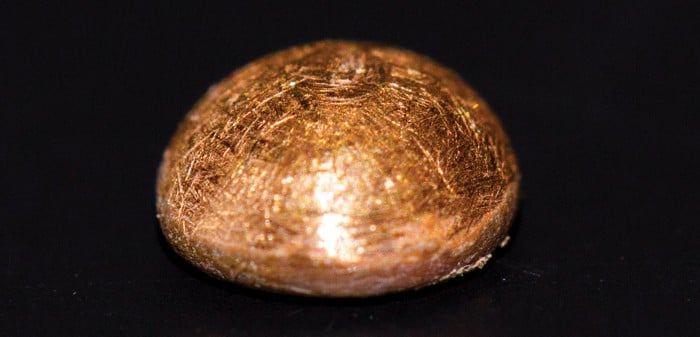An aerogel made from old milk can extract highly pure gold nuggets from discarded computer motherboards.
Discarded electronics, known as e-waste, often contain large amounts of gold and other heavy metals. Scientists have come up with methods to recover the valuable metals, but these processes often rely on synthetic chemicals that can damage the environment.
Raffaele Mezzenga at ETH Zurich in Switzerland and his colleagues have developed a way to recover gold from e-waste by using a milk-derived aerogel.
He and his colleagues started with whey protein, a byproduct of the cheesemaking industry, and made a low-density aerogel. Making the spongelike material is cheap, he says. “The value of the gold we recover is 50 times the value we invest to transform the protein into this sponge.”
The researchers placed whey protein into an acidic solution and heated it, which unraveled the proteins from tiny balls into strands. Then they freeze-dried the solution, forming a lightweight puck with high porosity.
“You can place them on the top of a flower. And the advantage of having aerogels is that they have high surface area,” says Mohammad Peydayesh, a chemical engineer who’s also part of the research team at ETH Zurich.
The researchers tested the gel’s ability to adsorb gold from a solution also containing other metals—including copper, lead, and nickel—at the same concentration.
Aerogel from old milk sucked up 93 percent of the gold
The aerogel sucked up 93 percent of the gold while removing less than 10 percent of any of the other metals. To test the protein sponge with real e-waste, the team dissolved computer motherboards in aqua regia, a mix of nitric acid and hydrochloric acid.
Gold ions from the mixture settled on the surface of the aerogel and were reduced, forming metallic gold. Each gram of aerogel snatched 190 mg of gold. Burning the aerogel freed the gold, turning it into a tiny hunk of metal.
“It was really exciting to find this nugget in the ashes,” Peydayesh recalls. The nugget was about 91% gold, which corresponds to about 21 to 22 carats.
The method already presents an improvement over activated carbon, a more typical adsorption method used to recover gold. Each gram of activated carbon only adsorbed about 60 mg of gold from an e-waste mixture, the team found. Because it takes a lot of energy to create activated carbon, recovering the same amount of gold using activated carbon had a higher environmental impact in a life cycle analysis.
The team is already eyeing other food waste proteins, such as keratin and those from the production of tofu, that could potentially help with other needs, such as the recycling of rare earth metals.
“We can simultaneously address the global waste of food and e-waste to produce something really precious,” Peydayesh says.
Related: Gold Treasure Remains Unclaimed 150 Years After Ship Sinking



